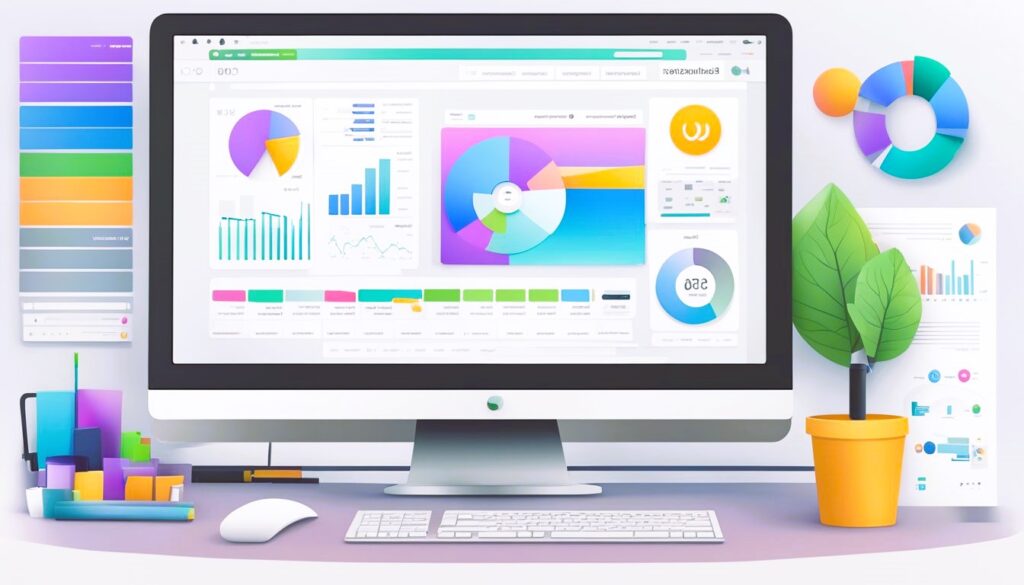In the ever-evolving landscape of web design, staying abreast of the latest tools and software is essential for creating modern, visually appealing, and functional websites. The continuous advancements in technology bring forth a plethora of innovative tools that empower designers and developers to push the boundaries of creativity and efficiency. In this article, we’ll delve into some of the latest web design tools and software that are shaping the digital design industry.
1. Figma
Figma has emerged as a collaborative interface design tool that enables real-time collaboration among designers. With its cloud-based platform, multiple team members can work simultaneously on a project, fostering efficient collaboration. Figma supports features like prototyping, vector editing, and design system creation, making it a versatile tool for modern web designers.
2. Adobe XD
Adobe XD is a robust design and prototyping tool that facilitates the creation of interactive prototypes and user experiences. With features like voice prototyping and Auto-Animate, Adobe XD empowers designers to bring their concepts to life. Integration with other Adobe Creative Cloud apps enhances its usability for those already familiar with the Adobe ecosystem.
3. Sketch

Sketch remains a popular vector graphics editor, especially among Mac users. Known for its simplicity and ease of use, Sketch is a go-to tool for UI and UX designers. Its extensive library of plugins and the ability to create reusable design elements contribute to its widespread adoption.
4. InVision Studio
InVision Studio combines design and prototyping into a single platform, offering an integrated workflow for designers. It allows for seamless transitions between design and animation, making it a powerful tool for creating interactive and dynamic user interfaces. Collaboration features and a design system manager further enhance its capabilities. Typography trends in modern web design, more details in our article.
5. Webflow
Webflow stands out as a comprehensive web design platform that enables designers to create responsive websites without writing code. Its intuitive visual interface, coupled with powerful design and animation tools, makes it an ideal choice for designers who want to bring their visions to life without delving into coding intricacies.
6. Zeplin
Zeplin is a collaboration tool that bridges the gap between designers and developers. It facilitates the handoff process by providing developers with assets, specs, and code snippets directly from design files. This streamlines the communication and implementation of design elements, ensuring a smoother transition from design to development.
7. Canva
Canva has gained popularity for its user-friendly interface and versatility in creating a wide range of designs, from social media graphics to web banners. While it may not be as feature-rich as some dedicated web design tools, its simplicity makes it accessible to users with varying levels of design expertise.
8. Gravit Designer
Gravit Designer is a cross-platform vector design application suitable for a range of design tasks, including web design. With features like boolean operations, symbols, and advanced typography tools, Gravit Designer provides a powerful yet lightweight solution for designers working on various platforms.
9. Avocode
Avocode streamlines the process of turning design files into code, facilitating collaboration between designers and developers. It allows for the inspection of design files, generation of code snippets, and seamless handoff, reducing the chances of misinterpretation during the development phase.
10. Atom
Atom is an open-source text editor that has gained popularity among developers for its extensibility and customization options. While not a design tool per se, its versatility makes it a valuable companion for web designers who prefer a lightweight and customizable code editor.
The Importance of Staying Updated
The rapid evolution of web design tools and software underscores the importance of staying updated in the field. Designers and developers can leverage these tools to streamline their workflows, enhance collaboration, and bring their creative visions to life.

Keeping abreast of the latest tools not only improves efficiency but also ensures that designers are well-equipped to tackle the challenges posed by evolving design trends and user expectations. Continuous learning and exploration of new tools contribute to a designer’s skill set and creativity.
The Role of Standards in Web Design Tools
In the dynamic world of web design tools, adherence to standards ensures interoperability, consistency, and accessibility. Standards such as those defined by the World Wide Web Consortium (W3C) establish guidelines that help maintain the integrity and compatibility of web design tools across platforms.
Following W3C standards contributes to the creation of websites and applications that are accessible to a diverse user base. Standards also play a vital role in fostering a collaborative environment where different tools can seamlessly integrate and complement each other.
Conclusion
Exploring the latest web design tools and software is an exciting journey that opens up new possibilities for designers and developers. From collaborative platforms to code editors, each tool serves a specific purpose in the web design ecosystem.
Whether you’re a seasoned professional or a newcomer to the field, embracing new tools can enhance your capabilities and keep your design skills sharp. The fusion of creativity and technology in web design tools continues to drive innovation, shaping the digital experiences of tomorrow.
As you navigate the world of web design tools, remember to stay informed about standards and best practices. Adhering to established standards ensures that your designs are not only visually appealing but also accessible and compatible across various devices and platforms.
So, dive into the world of the latest web design tools, experiment with new features, and let your creativity flourish as you contribute to the ever-evolving landscape of digital design.


